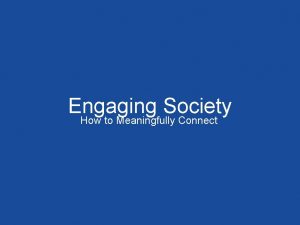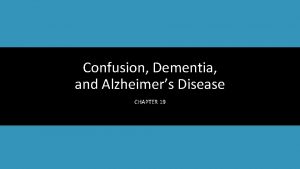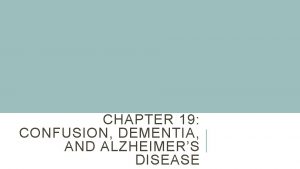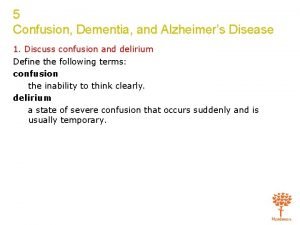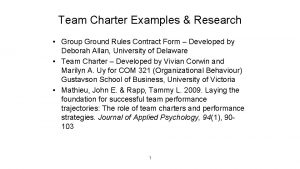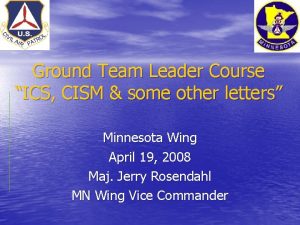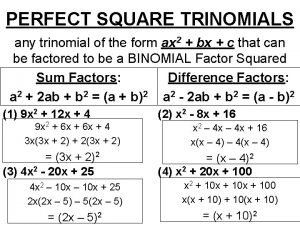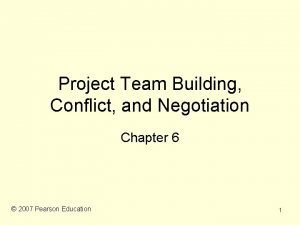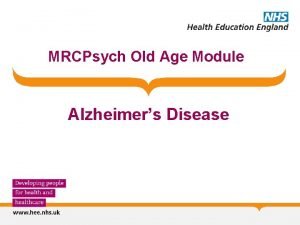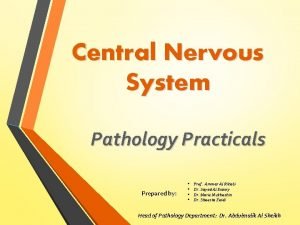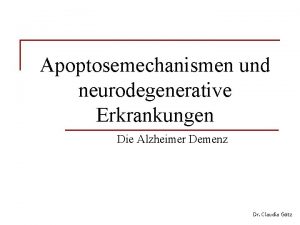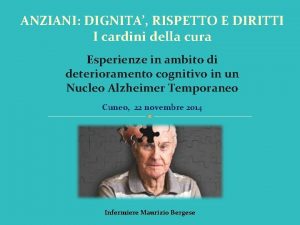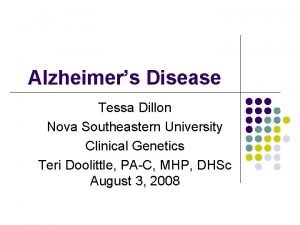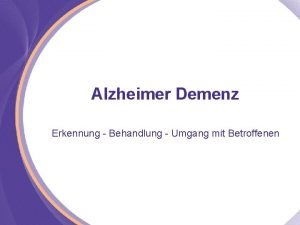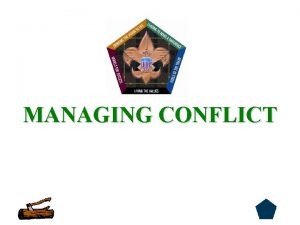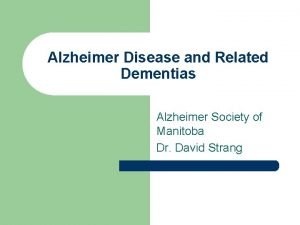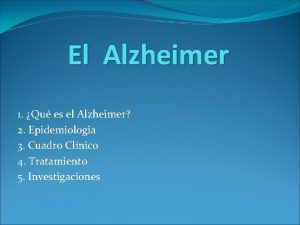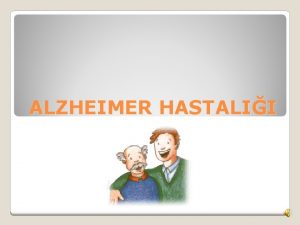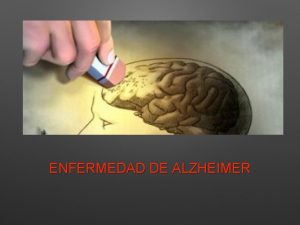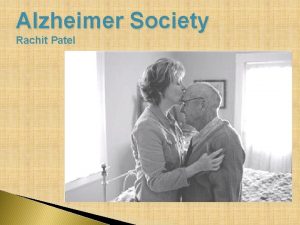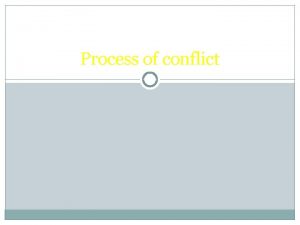Finding Middle Ground Team Conflict and Process Alzheimer





























- Slides: 29

Finding Middle Ground Team Conflict and Process Alzheimer Society of Manitoba Conference March 5, 2007 Peter S. Silin, MSW, RSW Diamond Geriatrics, Inc. ©www. Diamond. Geriatrics. com

Lawsuits, Threats, Explosions and Amazing Things

The Process Three parts to work with challenging families § § § Level I: Effective initial assessments Level II: Effective problem understanding Level III: Effective responding § One on One § Meetings § The better and earlier prepared, the easier it will be. § Prevention

Assessments

Good Ax = Problem understanding § “ Difficult Families: ” Care Home Study § Good assessments give § Problem understanding § Predictability § Prevention: Where to put time and attention § Directions for problem solving

Initial Assessments: Resident § § § General Social Histories and Psychosocial C. A. V. E. Model : Care According to Values Expressed

C. A. V. E© § Focuses primarily on “personhood” of the client or service receiver. § Focuses on the spirit, personality, what makes this person who they are and unique. § Requires the person or people providing services to focus on the person as a person, not as a “set of needs. ” § Not a needs based system. § Does not deny that an individual has needs, nor that a needs based model can be used concurrently.

C. A. V. E© § Provision of service follows from understanding who someone is § Asks: what is/has been important to you? How have you lived/do you want to live your life § What are the values that you have lived under, and currently operate from? § What are some of the hard decisions you have made? § It says to individual, families, caregivers, we want to help live life the way you want to live it.

C. A. V. E© § Resident generated vs. resident centred § An “inside out” model § Establishes a value base of care

Initial Assessments: Family § History § Dynamics: The Family Dance § Then they’ll assume you cha-cha § Relationships § Between Caregiver and resident § Between Family Caregivers

Initial Assessments: Families II § Individual Family Members § Emotional § Personality § Life Stressors § Previous History—Individual § Personal Agendas § Supports § Care Maps

Assessing Us: Assessing Validity § Flexibility § Self § staff § Administrator § system board § Rigid Systems § The meaning of no § Then everyone will want to do it

Assessing Us: Assessing Validity II § § § Egos taking precedence to care Personal histories and triggers The meaning of conflict INAM: it’s not about me Emotional Intelligence: § Understand one’s own and others emotions, express them; ability to understand manage relationships and emotional process in relationships. Leads to ability to handle oneself and relationships.

Understanding and Assessing the Concern

The Problem: About the Concern Levels of Difficulty/ Influence 1 § Facility: § Staff Action § The System § External systems § We can influence

The Problem: About the Concern Levels of Difficulty/ Influence 2 § Relationship/ Emotions § Facility interaction/relationship/team process § Grief, loss, guilt, fear, etc § Family dynamics § Sometimes we can influence

The Problem: About the Concern § Levels of Difficulty/ Influence 3 § Them § Past injuries and history § Personality § We cannot influence

The Response

Response Ability § Organizational Health § Climate: Fun and Humour § Staff relations and relationships § Staff validation and support § Communication, information, feedback systems § Preparations for strife § Policy and procedures for difficulties § Rounds/Education § Early identification § Response planning § Group and conflict resolution skills

When we can influence Provide What We Can Level 1 § Provide information § Allow our systems to bend § Problem solving Level 2 § Empathy § Supportive or intensive counselling § Work on relationship/team building § Follow-up and review

When we can influence Using Resources § Peer support and Family councils § Websites § Books and articles § System consultants § Outside Agencies and consultants

When We Don’t Have Influence Level 3 § Empathic Response § Find the grain of truth § Acknowledge the mistakes § Ask where they can help us § Systemic Response § § § Options/Limits Follow-up Start early

Specific Techniques § Responding to personalities § Bullying: setting limits § Splitting: create a uniform team, support each other § Slow things down: breathing, delayed response § Mirroring § Meta comments/ Comment on process § “I” statements

Meetings: Conditions for Positive Outcome § § § No hallway meetings Set up a time and place Decide on who should be there Enough time and time limit Set it Up § Why it is being held § Tentative goals

Create Conditions for Positive Outcome: Preparations § § Debrief your group Reframe your views Decide on roles task and process Self awareness of your triggers

Meeting Process § Meetings: Set the Stage § § Define the issue Agree on goals or objectives Agree on process of meeting Acknowledge the difficulties and emotions § Discuss the issue § § § Review history Ask for their comment on this Make sure they feel understood § Look for solutions § Brainstorming, best possible, win-win § Discuss and define follow-up

Post Meeting/ Planning Meeting § Debrief/How did it go § Response plan § Consistency § Team buy-in § System wide § Provide resources and education

Prevention § § Review admission/assessment procedures Review team building Review team maintenance Review yourself

Conflict & Quality Improvement § How do we use conflict to improve quality of care? § Data collection § Systemic change
 Finding common ground
Finding common ground Finding a team of experts in social networks
Finding a team of experts in social networks Chapter 19 confusion dementia and alzheimer's disease
Chapter 19 confusion dementia and alzheimer's disease Confusion dementia and alzheimer disease chapter 19
Confusion dementia and alzheimer disease chapter 19 Confusion dementia and alzheimer's disease
Confusion dementia and alzheimer's disease A helpful way for an na to respond to hallucinations is to
A helpful way for an na to respond to hallucinations is to Team ground rules examples
Team ground rules examples Ground team task guide
Ground team task guide Ics team leader
Ics team leader Perfect square trinomial questions
Perfect square trinomial questions Middle ground death penalty
Middle ground death penalty Background foreground middle ground
Background foreground middle ground Ashley astronomer middle ground
Ashley astronomer middle ground Negotiation team building
Negotiation team building Internal and external conflict
Internal and external conflict What is conflict and conflict resolution?
What is conflict and conflict resolution? External conflict
External conflict Chris larkin stroke
Chris larkin stroke Alzheimer sistema nervoso
Alzheimer sistema nervoso Alzheimer's disease microscopy
Alzheimer's disease microscopy Alzheimer sistema nervoso
Alzheimer sistema nervoso 4 types of alzheimer's disease
4 types of alzheimer's disease Escala alzheimer
Escala alzheimer Glioblastoma multiforme
Glioblastoma multiforme Demenz
Demenz Alzheimer tesina terza media
Alzheimer tesina terza media Tessa dillon
Tessa dillon Slidetodoc
Slidetodoc American alzheimer's association
American alzheimer's association Alzheimer disease definition
Alzheimer disease definition
